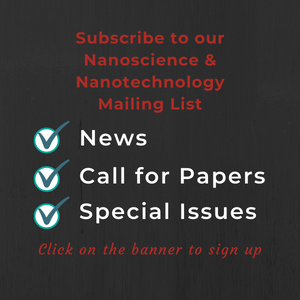System Upgrade on Tue, May 28th, 2024 at 2am (EDT)
Existing users will be able to log into the site and access content. However, E-commerce and registration of new users may not be available for up to 12 hours.For online purchase, please visit us again. Contact us at customercare@wspc.com for any enquiries.
Photodynamic therapy (PDT) utilizes photosensitizers (PS) together with irradiating light of specific wavelength interacting with oxygen to generate cytotoxic reactive oxygen species, in particular singlet oxygen, which has been approved for the clinical treatments of several malignant and non-malignant pathologies. Most recently, enhanced PDT was successfully achieved by using new light sources (i.e., light-emitting diode), novel functional nano-PSs, oxygen supply and synergistic therapy. In addition, PDT was widely used in the fields of antibacterial, antimicrobial and antibiofilm activities. The aim of this book is to highlight innovations in the fundamental mechanisms of enhanced PDT for clinical applications, and 20 papers published in the Journal of Innovative Optical Health Sciences during 2020–2023 were selected.
Sample Chapter(s)
Preface: Innovations in Enhanced Photodynamic Therapy: Fundamental Mechanisms
Contents:
- Developments in Light Sources and Emission Quantifications:
- Implementation and Uniformity Calibration of LED Array for Photodynamic Therapy (X Wang, J Xiong, X Hu and Q Li)
- A Portable Illumination Device for Photodynamic Therapy of the Oral Cavity (J Xiong, X Wang, X Hu, Y Han and Q Li)
- Novel Intense Pulsed Light-Photodynamic Therapy Strategy in the Treatment of Facial Actinic Keratoses Concomitant With Rosacea (S Shen, Y Cao, J Li, X Liu, Z Zhou, X Wang and P Wang)
- Development of New Photosensitizers and Photosensitizer Monitoring or Quantification:
- Development of a Hydrogen Peroxide-Responsive and Oxygen-Carrying Nanoemulsion for Photodynamic Therapy Against Hypoxic Tumors Using Phase Inversion Composition Method (L Hong, J Zhang, J Geng, J Qu and L Liu)
- Binary Organic Nanoparticles with Enhanced Reactive Oxygen Species Generation Capability for Photodynamic Therapy (X Weng, Z Bao and X Wei)
- The Application of Inorganic Optical Nanoprobes in Bacterial Infection (L Ding, L Jiang and G Liu)
- Orthogonal Aza-BODIPY–BODIPY Dyad as Heavy-Atom Free Photosensitizer for Photo-Initiated Antibacterial Therapy (D Yang, L Sun, L Xue, X Wang, Y Hu, J Shao, L Fu and X Dong)
- Meso-Substituted Cationic 3- and 4-N-Pyridylporphyrins and their Zn(II) Derivatives for Antibacterial Photodynamic Therapy (A G Gyulkhandanyan, M H Paronyan, A G Gyulkhandanyan, K R Ghazaryan, M V Parkhats, B M Dzhagarov, M V Korchenova, E N Lazareva, E S Tuchina, G V Gyulkhandanyan and V V Tuchin)
- Multivariety and Multimanufacturer Drug Identification Based on Near-Infrared Spectroscopy and Recurrent Neural Network (W Zeng, Y Qiu, Y Huang, Q Sun and Z Luo)
- A "Donor–Acceptor" Structured Semiconductor Polymer for Near Infrared Fluorescence Imaging Guided Photodynamic Therapy (B Li, T Xu, X Wang, S Zhao, B Wang, L Jiang, X Song and M Lan)
- A Novel BODIPY-Based Nano-Photosensitizer with Aggregation-Induced Emission for Cancer Photodynamic Therapy (Y Zhang, G Li, J Li, M Wu, X Liu and J Liu)
- Photoswitchable Semiconducting Polymer Dots with Photosensitizer Molecule and Photochromic Molecule Loading for Photodynamic Cancer Therapy (L Guo, B Xu, H Chen and Y Tang)
- Cerium-Based Nanoparticles for Cancer Photodynamic Therapy (H Li, M Wei, X Lv, Y Hu, J Shao, X Song, D Yang, W Wang, B Li and X Dong)
- Ultrasmall pH-Responsive Silicon Phthalocyanine Micelle for Selective Photodynamic Therapy Against Tumor (Y Zhou, W Zeng, M Wang, R Li, X Yue and Z Dai)
- Developments in Tissue Response Monitoring for Photodynamic Therapy:
- Three-Dimensional Imaging of Spatio-Temporal Dynamics of Small Blood Capillary Network in the Cortex Based on Optical Coherence Tomography: A Review (F Xing, J-H Lee, C Polucha and J Lee)
- Structured Illumination Microscopy Based on Asymmetric Three-Beam Interference (L Xu, Y Zhang, S Lang, H Wang, H Hu, J Wang and Y Gong)
- Varying of Up-Conversion Nanoparticles Luminescence from the Muscle Tissue Depth During the Compression (M Kozintseva, V Kochubey, J Konyukhova and V Tuchin)
- High-Speed All-Optic Optical Coherence Tomography and Photoacoustic Microscopy Dual-Modal System for Microcirculation Evaluation (Y Lin, M Yu, Y Wang, Z Meng, A Li, Z He, Q Wang, J Liu, Y Yu, Y Zhao, X Zhu and Z Ma)
- Monitoring of Time-Resolved Singlet Oxygen Luminescence at 1270 nm by an Optical Fiber Detection System (C Zhang, H Lin, Y Hu, J Sui, L Lin and B Li)
- Application and Development of Fluorescence Probes in MINFLUX Nanoscopy (Invited Paper) (J Wang, Z Zhang, H Shen, Q Wu and M Gu)
Readership: Advanced undergraduate and graduate students, researchers and practitioners in the fields of photodynamic therapy and photonic theranostics. Surgeons seeking visual aids and guidance techniques. Entrepreneurs in medical diagnostics.






